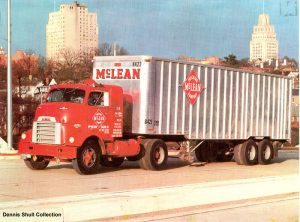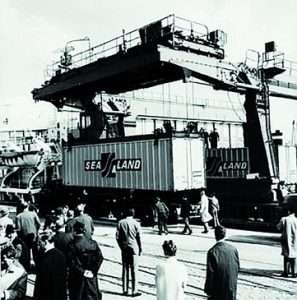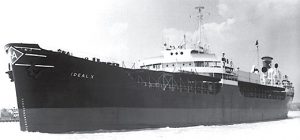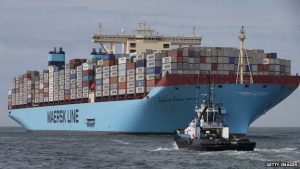A New Era: Intermodal transport
Continued from blog post ‘Part 1 The Box that changed the World…’

McLean’s early container design
Feeling his early container designs could be improved Malcolm McLean, set out to create a standardised shipping ‘trailer’ or container, he purchased shipping company, Pan-Atlantic, who already had docking rights in many of the eastern port cities and renamed it ‘SeaLand Industries’.

Sealand Industries
He tested variations of the trailer and settled on a primitive form of what we know today as the shipping container. It was strong, stackable, easy to load/unload and lockable. McLean then bought the oil tanker, Ideal X, and modified it to hold 58 of his newly designed containers. It was a huge success. He was able to offer a discounted price of conventional cargo transportation, and the containers being lockable – prevented goods being stolen.

IDEAL X
In 1957 his ship incredibly only required two groups of dockworkers to unload and load the cargo. The cargo could be moved at a staggering 30 tons per hour, unheard of at the time. However, there was still the issue of a lack of standardisation with regards to the container’s size and corner fittings. Standardisation was needed so containers could be stacked effectively.
During the 60’s and the Vietnm war, McLean continued improving his container designs and filing more patents, including his patent of the revolutionary shipping container corner posts (vital to strength and stacking) and several standards were agreed. He engaged an engineer, Keith Tantlinger to help him. In a genius maneuver, he then gave the patent designs royalty free to the Industrial Organization for Standardization (ISO). This helped catapult his designs to the industry standard.
By 1969, SeaLand Industries was the largest cargo-shipping business in the world, and R. J. Reynolds purchased the company that year for $160 million.
In the 1970’s, McLean returned on to the shipping scene after introducing and developing large “econoships” that would carry cargo at the equator while smaller ships came and went from them, picking up and delivering containers.
Malcom McLean died in 2001. His impact on transportation is up there with Henry Ford and yet his story remains relatively unknown. Because of him we have the standard ISO 20 foot and 40 foot shipping containers today.
Look out for future posts describing their many uses!

The Port of Felixstowe welcomed the arrival of the world’s biggest container ship this month, which can carry more than 21,000 20ft containers.


